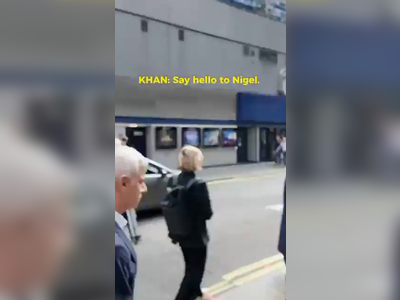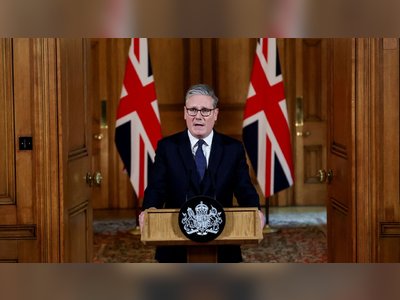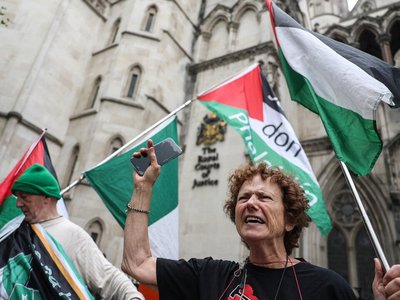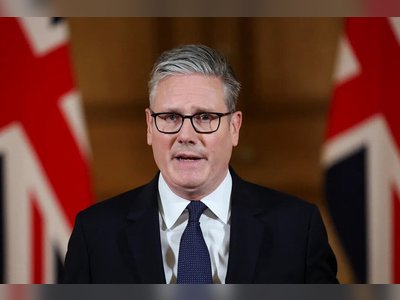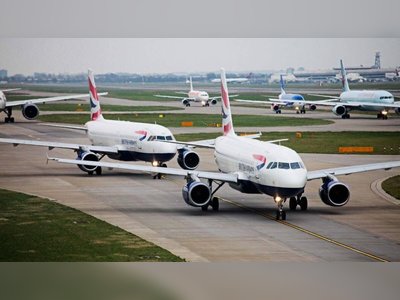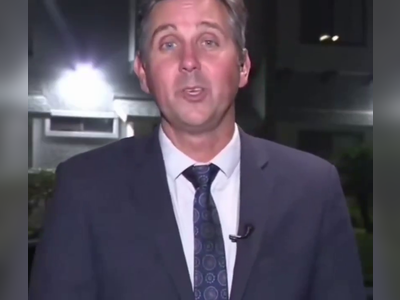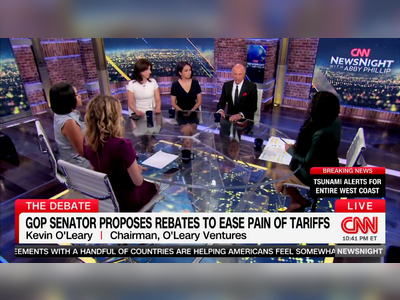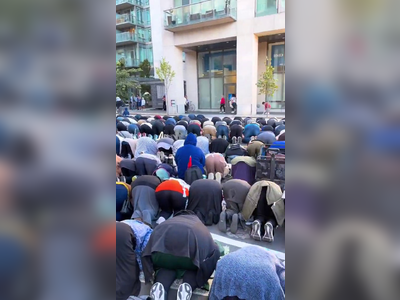Trump's Appearances in the Oval Office Reinterpret Presidential Communication
An examination of President Donald Trump’s almost daily press briefings from the Oval Office and their impact on the White House's communication approach.
WASHINGTON, Feb 16 (Reuters) - Since his return to the White House, President Donald Trump has substantially enhanced his public outreach by conducting nearly daily press briefings from the Oval Office.
In the last four weeks, Trump has held 34 press sessions, with 16 occurring in the iconic office, representing a considerable rise compared to his first term.
Presidential scholar Martha Joynt Kumar notes that this frequency is significantly higher than that of President Joe Biden, who conducted 22 Q&A sessions, including nine from the Oval Office, at a similar stage in his presidency.
This change in communication strategy positions the president as his own chief spokesperson, a calculated decision highlighted by White House press secretary Karoline Leavitt during her briefing on January 28. Leavitt stressed that both the president and his administration would maintain consistent engagement with the media.
This tactic emphasizes the symbolic power of the Oval Office, a location enhanced by presidential portraits and the historic Resolute Desk, which has been utilized by numerous presidents and remains a key element in these briefings.
In these sessions, President Trump has covered a variety of subjects, including updates on Ukraine and Gaza, economic policies, and domestic issues.
On one occasion, he revealed that he was in discussions with Russian President Vladimir Putin about a potential summit to resolve the conflict in Ukraine.
In another instance, he addressed regional concerns regarding Palestinian refugees and geopolitical issues related to Jordan.
His comments have also touched on domestic preferences, expressing his aversion to paper straws and reintroducing some personal preferences from his previous term.
The president’s mode of communication has drawn parallels to his predecessor.
Notably, Trump’s regular use of the Oval Office contrasts with the more restricted and managed press interactions of President Biden, who has primarily delivered structured speeches from various public spaces in the White House.
Historians, including presidential historian Douglas Brinkley, have pointed out that this approach marks an unprecedented utilization of the office as a platform for immediate communication.
Access to these sessions is still under the president's discretion.
The White House has placed limits on media access in particular situations, as evidenced by a recent decision to exclude Associated Press reporters following an editorial guideline regarding geographical terms.
The White House Correspondents’ Association and other media organizations have expressed concerns about such limitations.
These Oval Office briefings are frequently designated as "closed press" on the daily agenda; however, last-minute announcements by the president’s aides often permit journalists to be present.
In a recent instance, the press was summoned to the Oval Office on short notice to report on remarks made to Jordan’s King Abdullah regarding the nation's position on accepting Palestinian refugees.
Trump’s approach to direct communication from the Oval Office aims to reinforce his presidential authority.
The frequency and structure of these sessions indicate an effort to manage the narrative and directly connect with the public, representing a significant evolution in the White House’s communication strategies.
In the last four weeks, Trump has held 34 press sessions, with 16 occurring in the iconic office, representing a considerable rise compared to his first term.
Presidential scholar Martha Joynt Kumar notes that this frequency is significantly higher than that of President Joe Biden, who conducted 22 Q&A sessions, including nine from the Oval Office, at a similar stage in his presidency.
This change in communication strategy positions the president as his own chief spokesperson, a calculated decision highlighted by White House press secretary Karoline Leavitt during her briefing on January 28. Leavitt stressed that both the president and his administration would maintain consistent engagement with the media.
This tactic emphasizes the symbolic power of the Oval Office, a location enhanced by presidential portraits and the historic Resolute Desk, which has been utilized by numerous presidents and remains a key element in these briefings.
In these sessions, President Trump has covered a variety of subjects, including updates on Ukraine and Gaza, economic policies, and domestic issues.
On one occasion, he revealed that he was in discussions with Russian President Vladimir Putin about a potential summit to resolve the conflict in Ukraine.
In another instance, he addressed regional concerns regarding Palestinian refugees and geopolitical issues related to Jordan.
His comments have also touched on domestic preferences, expressing his aversion to paper straws and reintroducing some personal preferences from his previous term.
The president’s mode of communication has drawn parallels to his predecessor.
Notably, Trump’s regular use of the Oval Office contrasts with the more restricted and managed press interactions of President Biden, who has primarily delivered structured speeches from various public spaces in the White House.
Historians, including presidential historian Douglas Brinkley, have pointed out that this approach marks an unprecedented utilization of the office as a platform for immediate communication.
Access to these sessions is still under the president's discretion.
The White House has placed limits on media access in particular situations, as evidenced by a recent decision to exclude Associated Press reporters following an editorial guideline regarding geographical terms.
The White House Correspondents’ Association and other media organizations have expressed concerns about such limitations.
These Oval Office briefings are frequently designated as "closed press" on the daily agenda; however, last-minute announcements by the president’s aides often permit journalists to be present.
In a recent instance, the press was summoned to the Oval Office on short notice to report on remarks made to Jordan’s King Abdullah regarding the nation's position on accepting Palestinian refugees.
Trump’s approach to direct communication from the Oval Office aims to reinforce his presidential authority.
The frequency and structure of these sessions indicate an effort to manage the narrative and directly connect with the public, representing a significant evolution in the White House’s communication strategies.
